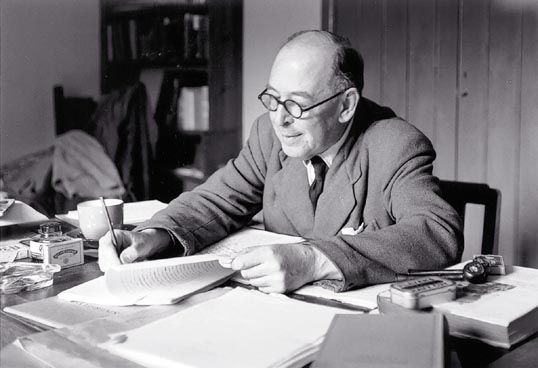Midazolam is a very strong drug used for lethal injections!
It's usual dose is less than .5 mg!
2mg is used for surgery patients! I believe the initial dose is supposed to be .25 mg. 1/4 of a mg! They prescribed 10mg!
That is LETHAL!
This man's father was prescribed 10mg every 4 hours!
Reading the usual dosage
Usual Adult Dose for Light Sedation
Patients younger than 60 years:
IM: 0.07 to 0.08 mg/kg IM once, up to 1 hour before surgery
IV: 1 to 2.5 mg slow IV every 2 minutes as necessary for sedation
-Maintenance dose: After thorough clinical evaluation, additional doses may be given in increments of 25% of the initial dose used to reach sedation.
-Maximum dose: 2.5 mg/dose
Comments:
-Some patients respond to IV doses of 1 mg.
-A total IV dose over 5 mg is usually not necessary.
-The need for continued sedation with maintenance doses should be carefully considered.
Uses:
-Preoperative sedation/anxiolysis/amnesia
-Agent for sedation/anxiolysis/amnesia prior to/during diagnostic, therapeutic/endoscopic procedures (e.g., bronchoscopy, gastroscopy, cystoscopy, coronary angiography, cardiac catheterization, oncology procedures, radiologic procedures, suture of lacerations and other procedures alone/in combination of with other central nervous system [CNS] depressants)
Usual Adult Dose for Light Anesthesia
Patients younger than 55 years:
Premedicated patients: 0.25 mg/kg IV once, administered over 20 to 30 seconds. Healthcare providers should allow 2 minutes for effect.
Unpremedicated patients:
-Initial dose: 0.3 to 0.35 mg/kg IV once, administered over 20 to 30 seconds. Healthcare providers should allow 2 minutes to for effect. If induction is not complete after 2 minutes, inhalation anesthetics and/or further doses of this drug in increments of 25% of the initial dose may be given.
-Maximum dose: 0.6 mg/kg
Comments:
-When used concomitantly with other drugs used to induce anesthesia, initial doses may be reduced by to up to 25%.
-Total doses of 0.6 mg/kg may be used in unpremedicated, resistant patients, but the dose could prolong recovery.
-Doses between 0.15 and 0.35 mg/kg have been used in premedicated patients.
-Fentanyl, used as premedication, should be administered 5 minutes before induction. Other narcotics used for premedication should be administered approximately 1 hour prior to induction.
Uses:
-Induction of general anesthesia before administration of other anesthetic agents
-Component of IV supplementation of nitrous oxide and oxygen (balanced anesthesia)
Usual Adult Dose for Sedation
Loading dose: 0.01 to 0.05 mg/kg IV via slow injection or infusion over several minutes; the dose may be repeated in 10 to 15-minute intervals until sedation is achieved.
Maintenance dose: 0.2 to 0.1 mg/kg via IV infusion per hour
Comments:
-Loading and/or maintenance doses may be increased in some circumstances.
-The initial infusion rate is usually 1 to 7 mg/hour.
-The lowest effective dose should be used, and patients should be regularly assessed for sedation.
Uses:
-As a component of anesthesia for sedation of intubated and mechanically ventilated patients
-During treatment of intubated and mechanically ventilated patients in critical care settings
https://odysee.com/@thebernician:7/wayne-smith-the-1st-midazolam-murders:b Midazolam is a very strong drug used for lethal injections!
It's usual dose is less than .5 mg!
2mg is used for surgery patients! I believe the initial dose is supposed to be .25 mg. 1/4 of a mg! They prescribed 10mg!
That is LETHAL!
This man's father was prescribed 10mg every 4 hours!
Reading the usual dosage
Usual Adult Dose for Light Sedation
Patients younger than 60 years:
IM: 0.07 to 0.08 mg/kg IM once, up to 1 hour before surgery
IV: 1 to 2.5 mg slow IV every 2 minutes as necessary for sedation
-Maintenance dose: After thorough clinical evaluation, additional doses may be given in increments of 25% of the initial dose used to reach sedation.
-Maximum dose: 2.5 mg/dose
Comments:
-Some patients respond to IV doses of 1 mg.
-A total IV dose over 5 mg is usually not necessary.
-The need for continued sedation with maintenance doses should be carefully considered.
Uses:
-Preoperative sedation/anxiolysis/amnesia
-Agent for sedation/anxiolysis/amnesia prior to/during diagnostic, therapeutic/endoscopic procedures (e.g., bronchoscopy, gastroscopy, cystoscopy, coronary angiography, cardiac catheterization, oncology procedures, radiologic procedures, suture of lacerations and other procedures alone/in combination of with other central nervous system [CNS] depressants)
Usual Adult Dose for Light Anesthesia
Patients younger than 55 years:
Premedicated patients: 0.25 mg/kg IV once, administered over 20 to 30 seconds. Healthcare providers should allow 2 minutes for effect.
Unpremedicated patients:
-Initial dose: 0.3 to 0.35 mg/kg IV once, administered over 20 to 30 seconds. Healthcare providers should allow 2 minutes to for effect. If induction is not complete after 2 minutes, inhalation anesthetics and/or further doses of this drug in increments of 25% of the initial dose may be given.
-Maximum dose: 0.6 mg/kg
Comments:
-When used concomitantly with other drugs used to induce anesthesia, initial doses may be reduced by to up to 25%.
-Total doses of 0.6 mg/kg may be used in unpremedicated, resistant patients, but the dose could prolong recovery.
-Doses between 0.15 and 0.35 mg/kg have been used in premedicated patients.
-Fentanyl, used as premedication, should be administered 5 minutes before induction. Other narcotics used for premedication should be administered approximately 1 hour prior to induction.
Uses:
-Induction of general anesthesia before administration of other anesthetic agents
-Component of IV supplementation of nitrous oxide and oxygen (balanced anesthesia)
Usual Adult Dose for Sedation
Loading dose: 0.01 to 0.05 mg/kg IV via slow injection or infusion over several minutes; the dose may be repeated in 10 to 15-minute intervals until sedation is achieved.
Maintenance dose: 0.2 to 0.1 mg/kg via IV infusion per hour
Comments:
-Loading and/or maintenance doses may be increased in some circumstances.
-The initial infusion rate is usually 1 to 7 mg/hour.
-The lowest effective dose should be used, and patients should be regularly assessed for sedation.
Uses:
-As a component of anesthesia for sedation of intubated and mechanically ventilated patients
-During treatment of intubated and mechanically ventilated patients in critical care settings
https://odysee.com/@thebernician:7/wayne-smith-the-1st-midazolam-murders:b











